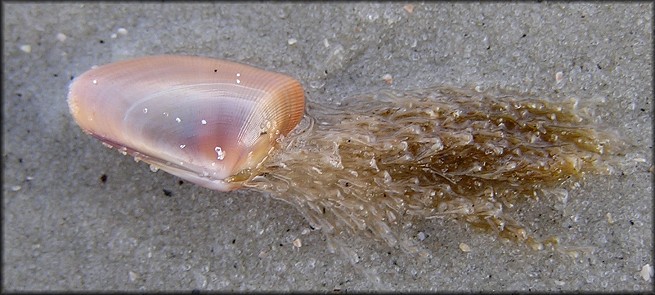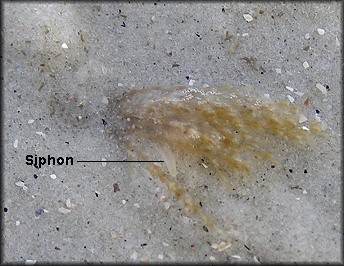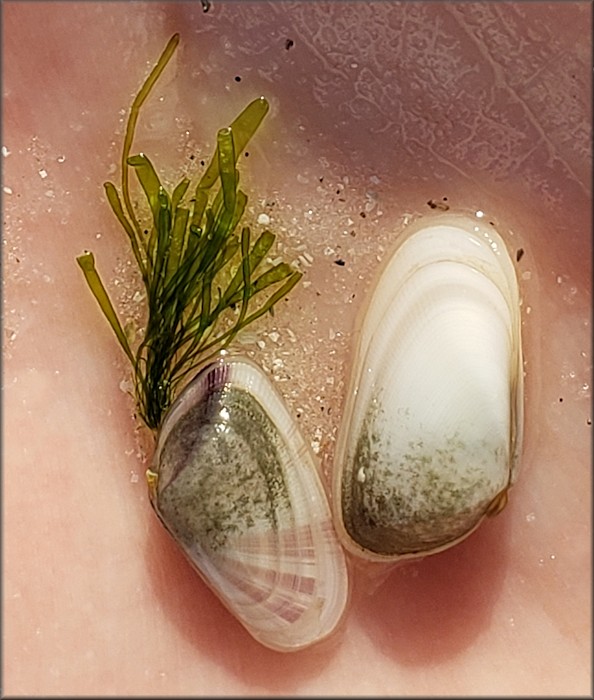|
Donax variabilis Say, 1822 with hydroid |
| During the summer and fall months a significant portion of the specimens found on northeast Florida beaches have a hydroid "plume" attached to the posterior aspect of the shell (the short end; the upper end when burrowing; the end with the siphons). Over the years this phenomenon has been a continuing source of amazement to those observing it for the first time and has generated many questions. A study of the sibling species Donax fossor indicates predation by Neverita duplicata (Shark Eye; Moon Snail) was affected by the presence of a hydroid colony. Donax without a hydroid colony were drilled more frequently than those possessing it, which suggests that the Donax benefits from the hydroid by way of predator deterrence. The reduced predation supports the case that this symbiosis is an instance of mutualism. |
|
|
|
Below - buried in the substrate |
|
|
|
Little Talbot Island State Park, Duval County, Florida 7/26/2004 (shell about 14 mm.) |
|
Donax with green alga |
|
|
| In addition to hydroid attachments, the species can also be found with apparent green alga adornments. The specimen above was photographed by Erin Brooks at Redington Beach, Pinellas County, Florida during the summer of 2019. Ms. Brooks found multiple specimens with the attachments. |


